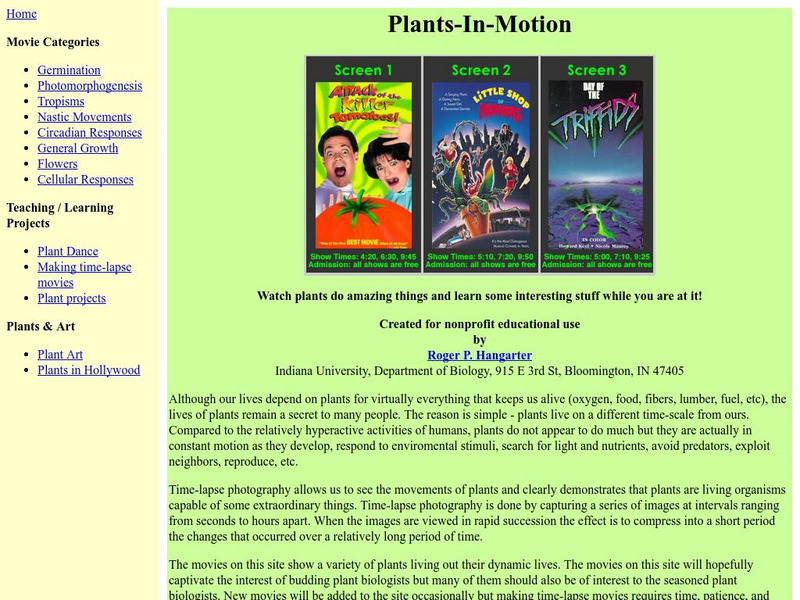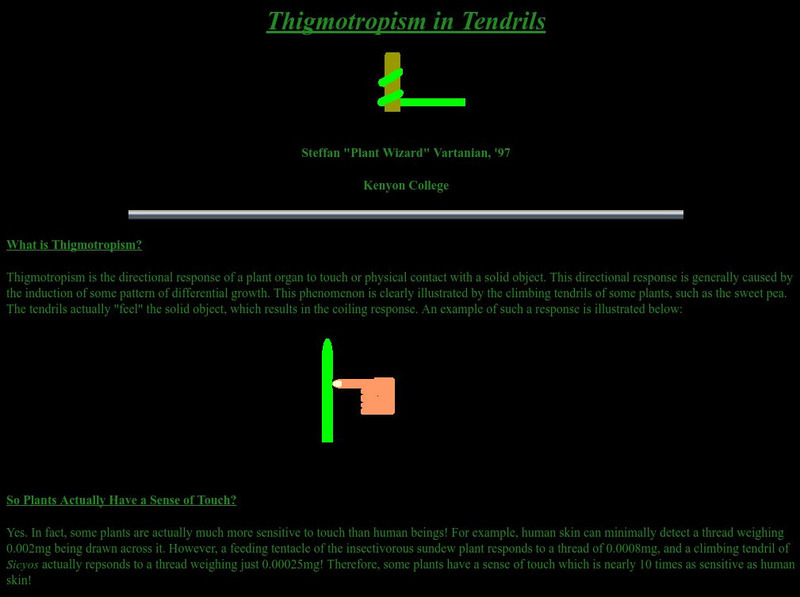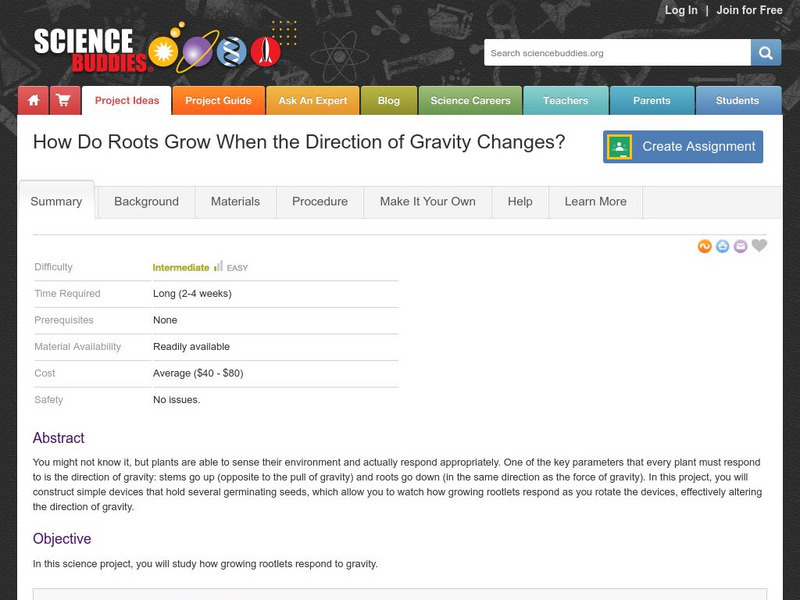University of Hamburg
University of Hamburg: Photoperiodism and Stimulation
A good summary of the photoperiodic effects of plants. Discussion of the way that the length of the day effects the growth of plants.
Indiana University
Indiana University: Plants in Motion
Plants grow and change on a time scale that is too slow for us to observe in real time. Time-lapse photography is a simple technique that allows us to see the movements of plants and clearly demonstrates that plants are living and...
CK-12 Foundation
Ck 12: Life Science: Tropisms
[Free Registration/Login may be required to access all resource tools.] Plants may not be able to move, but they are able to change how they grow in response to their environment. Growth toward or away from a stimulus is known as a...
Other
Kenyon College: Thigmotropism in Tendrils
What is thigmotropism? Do plants have a sense of touch? What causes plants to curve toward the stimulus? Animated illustrations help to provide these answers and more. Hint: highlighting the text makes it easier to read.
BBC
Bbc: Gcse Bitesize: Plant Hormones
Plants produce hormones and respond to external stimuli, growing towards sources of water and light, which they need to survive. Read about tropisms and auxins that are used to control growth in plants. There is a quiz at the end.
CK-12 Foundation
Ck 12: Third Grade: Life Science: Plant Adaptations to Environmental Changes
[Free Registration/Login may be required to access all resource tools.] Discuses how plants respond to changes in their environment and some special adaptations in plants.
McGraw Hill
Mhhe: Plant Growth and Growth Regulators
A very good overview of the hormonal control of plant responses to different environmental cues. Good place to start research.
Science Buddies
Science Buddies: How Do Roots Grow When the Direction of Gravity Changes?
You might not know it, but plants are able to sense their environment and actually respond appropriately. One of the key parameters that every plant must respond to is the direction of gravity: stems go up (opposite to the pull of...
Curated OER
Kenyon College: Thigmotropism in Tendrils
What is thigmotropism? Do plants have a sense of touch? What causes plants to curve toward the stimulus? Animated illustrations help to provide these answers and more. Hint: highlighting the text makes it easier to read.








